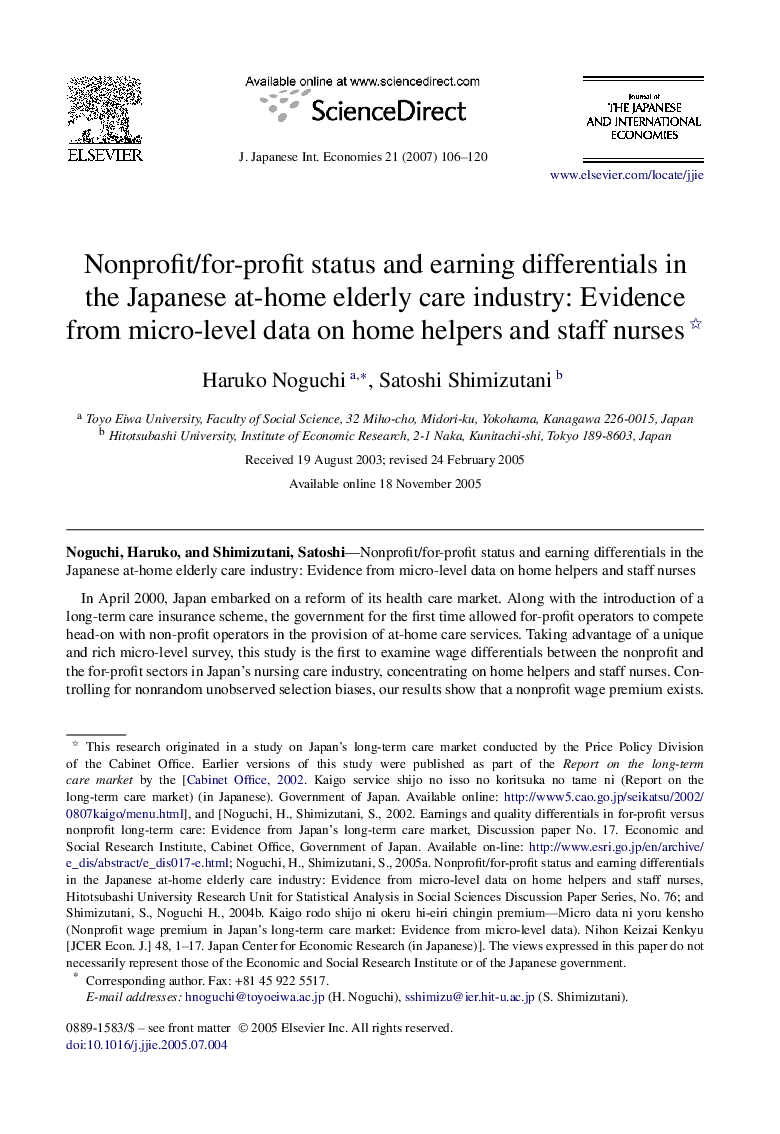| Article ID | Journal | Published Year | Pages | File Type |
|---|---|---|---|---|
| 965079 | Journal of the Japanese and International Economies | 2007 | 15 Pages |
Abstract
In April 2000, Japan embarked on a reform of its health care market. Along with the introduction of a long-term care insurance scheme, the government for the first time allowed for-profit operators to compete head-on with non-profit operators in the provision of at-home care services. Taking advantage of a unique and rich micro-level survey, this study is the first to examine wage differentials between the nonprofit and the for-profit sectors in Japan's nursing care industry, concentrating on home helpers and staff nurses. Controlling for nonrandom unobserved selection biases, our results show that a nonprofit wage premium exists. This finding supports the hypothesis that nonprofit providers operate under non-distributional constraints. J. Japanese Int. Economies 21 (1) (2007) 106-120.
Related Topics
Social Sciences and Humanities
Economics, Econometrics and Finance
Economics and Econometrics
Authors
Haruko Noguchi, Satoshi Shimizutani,
